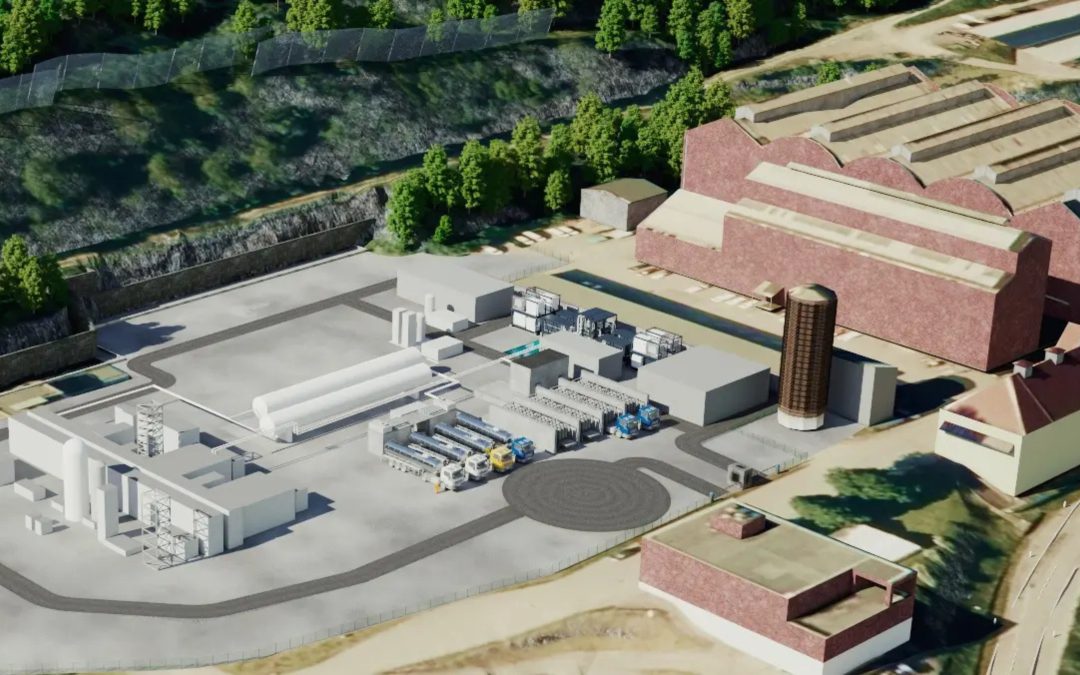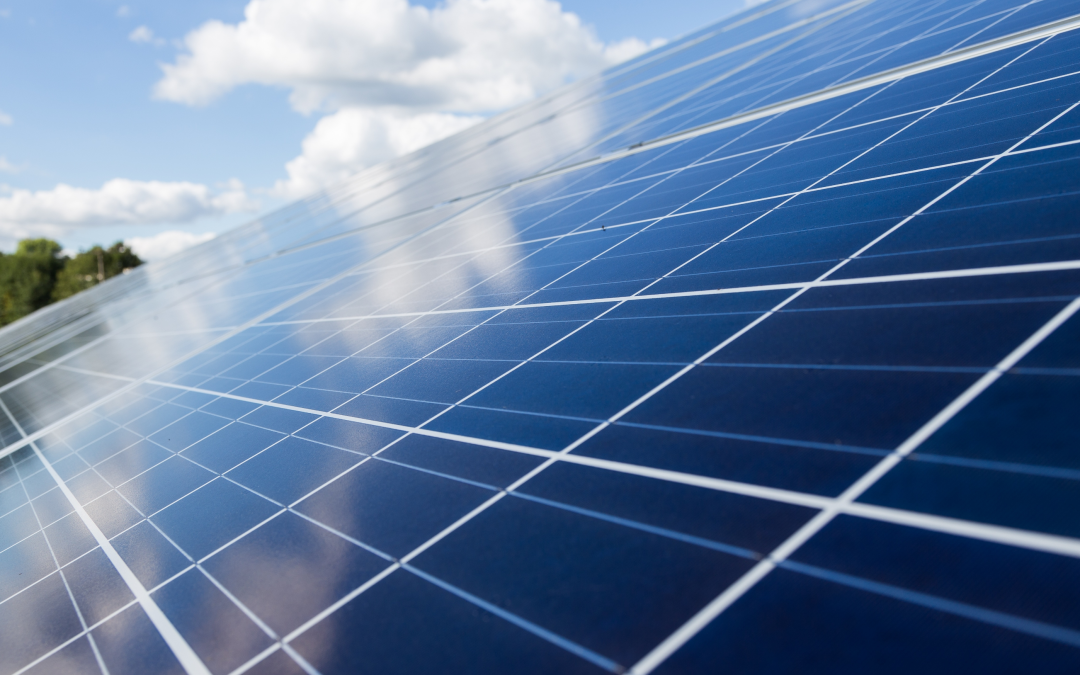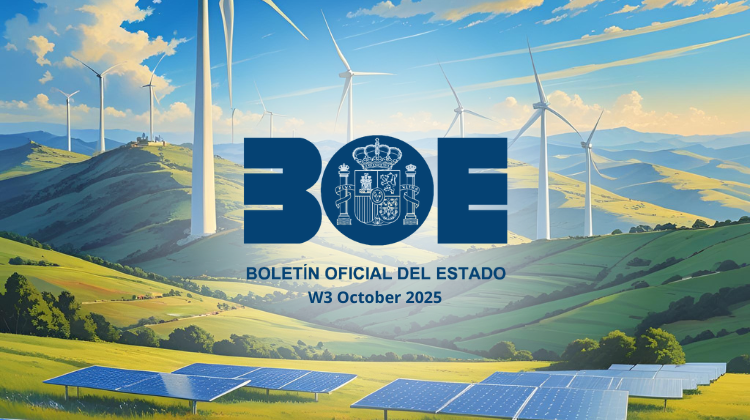The project, funded by the European Union through the Erasmus+ programme, officially kicked off with a vibrant and collaborative meeting among project partners.


The project, funded by the European Union through the Erasmus+ programme, officially kicked off with a vibrant and collaborative meeting among project partners.

The Belgian company, the only solar panel manufacturer certified as a B Corp in Europe, is moving forward with an international expansion strategy and is committed to European industrialization in the face of “unfair competition” from Asian products.

The company, ScottishPower Renewables, has awarded an EPCIC (Engineering, Procurement, Construction, Installation and Commissioning) contract for its East Anglia TWO offshore substation and jacket foundation to HSM Offshore Energy.

The CDU, CSU and SPD coalition has unveiled an ambitious energy plan that includes a rapid rollout of hydrogen, incentives for electromobility, competitive energy pricing and carbon capture mechanisms. All aimed at preserving industrial competitiveness and advancing decarbonisation.

The 49.9 MW project, owned and led by Low Carbon, is Trinasolar’s first to combine modules, mounting structures, and energy storage on a single site.

The UK Government and Ofgem have launched a reform prioritising strategic projects to fast-track the energy transition. The plan is expected to unlock £40 billion in annual private investment, following £43.7 billion already announced since July in the clean energy sector.

Ireland’s grid operator EirGrid has unveiled a €1bn procurement plan to build offshore infrastructure along the east and south coasts. Meanwhile, new data shows wind power saved €1.2bn in 2024 alone.

Between January and March 2025, Great Britain increased its reliance on natural gas for electricity generation, while wind energy power fell by up to 7 percentage points compared to the same period last year. Despite this, carbon intensity continued to decline, reaching lows of 35 gCO₂/kWh.

BSW-Solar welcomed the coalition agreement between the CDU/CSU and SPD for its push toward renewables, although it warned of risks to investment. The organization called for an acceleration of the energy transition and the elimination of barriers to storage and clean generation.

The British government is pushing forward with its second round of hydrogen support, advancing 27 projects in key sectors such as aviation, glass manufacturing and energy generation. The initiative could attract over £1 billion in private investment and create thousands of skilled jobs in the country’s industrial heartlands.

Although 96.5% of renewable electricity reached end consumers, solar curtailment totalled 1,389 GWh in 2024 — a 97% increase year-on-year. Germany’s Federal Network Agency attributes the spike to increased installed capacity and exceptionally high solar radiation.

Germany activates an innovative financing scheme for its 9,040-km hydrogen backbone. The model prevents early users from bearing high costs and guarantees private investment through federal support.

Within a year, Sweden’s battery capacity for balancing services soared from 80 MW to 610 MW, yet local grid operators are struggling to keep up. A report by Svensk Solenergi reveals the regulatory, technical and operational barriers slowing down their integration.

Norwegian Hydrogen has now made the investment decision for a new hydrogen plant in Rjukan, Telemark in Norway. This is part of the company’s strategy, which includes existing production of green hydrogen and several new projects currently under development across the Nordic region.

With 1.735 million installations and 18 GW of operational capacity, the UK consolidates its solar rollout. In 2024 alone, 191,000 systems were added, while large-scale projects like Peartree Hill and One Earth, totalling over 1 GW, move forward. The complete list of projects at the bottom of the article.

The German Offshore Wind Energy Association (BWO) strongly rejects any attempt to reduce the legally binding 70 GW target by 2045. Its Managing Director, Stefan Thimm, warns that stepping back now would lead to costly energy imports. Germany closed 2024 with 8.5 GW of installed offshore wind capacity.

The new auction under the Renewable Energy Act (EEG) offers a total volume of 3,443,164 kW for onshore wind projects. The maximum bid value is set at 7.35 cents per kilowatt hour. The deadline for submitting applications is May 2 due to a national holiday.

In 2024, Germany approved around 2,400 new wind turbines, representing 14 GW of additional installed capacity and an 85% increase compared to the previous year. However, regional disparities and regulatory complexity continue to slow down the permitting process. While some states approve projects in under a year, others take three to four years to complete the process.

Over 12,000 companies are currently on a waiting list to connect to the Dutch power grid. The government is working with grid operators, the ACM and market players on more than 100 measures to increase capacity as quickly as possible. All actions are to be finalised by the end of April.

The Bundesnetzagentur approved 422 onshore wind projects totalling 4,094 MW at an average price of 7.00 ct/kWh. Results were also announced for the solar segment, with 143 contracts awarded at an average price of 9.10 ct/kWh.

The UK Government has launched Great British Energy’s first major project: installing solar panels on 200 hospitals and 200 schools. With an initial £200 million investment, the plan aims to save up to £400 million over 30 years while accelerating the energy transition in deprived areas of the country.

The project, funded by the European Union through the Erasmus+ programme, officially kicked off with a vibrant and collaborative meeting among project partners.

The Belgian company, the only solar panel manufacturer certified as a B Corp in Europe, is moving forward with an international expansion strategy and is committed to European industrialization in the face of “unfair competition” from Asian products.

The company, ScottishPower Renewables, has awarded an EPCIC (Engineering, Procurement, Construction, Installation and Commissioning) contract for its East Anglia TWO offshore substation and jacket foundation to HSM Offshore Energy.

The CDU, CSU and SPD coalition has unveiled an ambitious energy plan that includes a rapid rollout of hydrogen, incentives for electromobility, competitive energy pricing and carbon capture mechanisms. All aimed at preserving industrial competitiveness and advancing decarbonisation.

The 49.9 MW project, owned and led by Low Carbon, is Trinasolar’s first to combine modules, mounting structures, and energy storage on a single site.

The UK Government and Ofgem have launched a reform prioritising strategic projects to fast-track the energy transition. The plan is expected to unlock £40 billion in annual private investment, following £43.7 billion already announced since July in the clean energy sector.

Ireland’s grid operator EirGrid has unveiled a €1bn procurement plan to build offshore infrastructure along the east and south coasts. Meanwhile, new data shows wind power saved €1.2bn in 2024 alone.

Between January and March 2025, Great Britain increased its reliance on natural gas for electricity generation, while wind energy power fell by up to 7 percentage points compared to the same period last year. Despite this, carbon intensity continued to decline, reaching lows of 35 gCO₂/kWh.

BSW-Solar welcomed the coalition agreement between the CDU/CSU and SPD for its push toward renewables, although it warned of risks to investment. The organization called for an acceleration of the energy transition and the elimination of barriers to storage and clean generation.

The British government is pushing forward with its second round of hydrogen support, advancing 27 projects in key sectors such as aviation, glass manufacturing and energy generation. The initiative could attract over £1 billion in private investment and create thousands of skilled jobs in the country’s industrial heartlands.

Although 96.5% of renewable electricity reached end consumers, solar curtailment totalled 1,389 GWh in 2024 — a 97% increase year-on-year. Germany’s Federal Network Agency attributes the spike to increased installed capacity and exceptionally high solar radiation.

Germany activates an innovative financing scheme for its 9,040-km hydrogen backbone. The model prevents early users from bearing high costs and guarantees private investment through federal support.

Within a year, Sweden’s battery capacity for balancing services soared from 80 MW to 610 MW, yet local grid operators are struggling to keep up. A report by Svensk Solenergi reveals the regulatory, technical and operational barriers slowing down their integration.

Norwegian Hydrogen has now made the investment decision for a new hydrogen plant in Rjukan, Telemark in Norway. This is part of the company’s strategy, which includes existing production of green hydrogen and several new projects currently under development across the Nordic region.

With 1.735 million installations and 18 GW of operational capacity, the UK consolidates its solar rollout. In 2024 alone, 191,000 systems were added, while large-scale projects like Peartree Hill and One Earth, totalling over 1 GW, move forward. The complete list of projects at the bottom of the article.

The German Offshore Wind Energy Association (BWO) strongly rejects any attempt to reduce the legally binding 70 GW target by 2045. Its Managing Director, Stefan Thimm, warns that stepping back now would lead to costly energy imports. Germany closed 2024 with 8.5 GW of installed offshore wind capacity.

The new auction under the Renewable Energy Act (EEG) offers a total volume of 3,443,164 kW for onshore wind projects. The maximum bid value is set at 7.35 cents per kilowatt hour. The deadline for submitting applications is May 2 due to a national holiday.

In 2024, Germany approved around 2,400 new wind turbines, representing 14 GW of additional installed capacity and an 85% increase compared to the previous year. However, regional disparities and regulatory complexity continue to slow down the permitting process. While some states approve projects in under a year, others take three to four years to complete the process.

Over 12,000 companies are currently on a waiting list to connect to the Dutch power grid. The government is working with grid operators, the ACM and market players on more than 100 measures to increase capacity as quickly as possible. All actions are to be finalised by the end of April.

The Bundesnetzagentur approved 422 onshore wind projects totalling 4,094 MW at an average price of 7.00 ct/kWh. Results were also announced for the solar segment, with 143 contracts awarded at an average price of 9.10 ct/kWh.

The UK Government has launched Great British Energy’s first major project: installing solar panels on 200 hospitals and 200 schools. With an initial £200 million investment, the plan aims to save up to £400 million over 30 years while accelerating the energy transition in deprived areas of the country.

El operador del sistema inició las pruebas para incorporar nuevas plantas capaces de regular la tensión en tiempo real, un paso clave para aumentar la estabilidad eléctrica y aprovechar mejor la generación renovable en la red española.

The engineering and construction company is advancing key initiatives in the energy transition, combining H2V and battery projects across strategic countries in Latin America. “We align with clients who share our values,” highlighted Óscar Falcón, Regional Operations Leader.

More than 800 MW move forward across Aragón, Castilla y León, Castilla-La Mancha, Extremadura and Andalucía, while the Valencia region faces setbacks in Statkraft’s projects.






